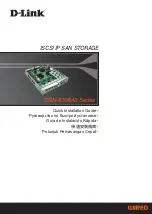
5
2 Groups are controlled with two buttons (parameter 1/2 = 1)
The buttons 1 and 3 control the control group A (button 1
turns on,
button 3 turns off), the buttons 2 and 4 control
the control group B
(button 2 turns on, button 4 turns off).
In case dimmers are controlled,
holding down the larger
button will dim up, holding down the smaller
button will dim down the load. Releasing the button will stop the
dimming function.
4 Groups are controlled with two buttons and double click
(parameter 1/2 = 2)
This mode enhances the previous mode and allows to control two
further control groups C and D using double clicks. The devices
supports 8 different operating modes – this means the kind of
commands sent out when pushing a button. Operating modes either
directly control other devices or they issue various scene activation
commands to a central controller.
The device supports 8 different operating modes – this means the kind
of commands sent out when pushing a button. Operating modes either
directly control other devices or they issue various scene activation
commands to a central controller.
Operating modes for direct device control are:
•
Direct control of associated devices with On/Off/Dim commands (parameter 11...14 = 1). Devices are
controlled using Basic Set On/Off commands and Switch-Multilevel Dim Start/Stop. This mode implements
communication pattern 7**.
•
Direct control of associated devices with only On/Off commands (parameter 11...14 = 2). Devices are
controlled using only Basic Set On/Off commands. On dimming Up event On is sent, on dimming Down Off is
sent. This mode also implements communication pattern 7**.
•
Switch-All commands (parameter 11...14 = 3). In this mode all neighboring devices will receive Switch-All set
On/Off command and interpret it according to their membership in Switch-All groups. This mode implements
communication pattern 7**.
•
Direct control of devices in proximity (parameter 11...14 = 6). Basic Set and Switch-Multilevel Dim commands
are sent to a device in proximity (50...100 cm) from the controller. Attention: In case there are more than one
Z-Wave devices nearby all these devices may be switched. For this reason the proximity function should be
handled with care. This mode implements communication pattern 7**.
•
Door lock control (parameter 11...14 = 7). This mode allows direct control (open/close) of electronic door locks
using secure communication. The mode implements communication pattern 7**.
Operating modes for scene activation are:
•
Direct activation of preconfigured scenes (parameter 11...14 = 5). Associated devices in an association group
are controlled by individual commands defined by Z-Wave command class „Scene Controller Configuration“. This
mode enhances mode direct control of associated devices with On/Off/Dim commands and implements
communication patterns 6 and 7**. Please turn the button mode to „separate“ to allow different a scene ID on
every button.
•
Scene activation in IP gateway (parameter 11...14 = 4). If configured correctly the buttons can trigger a scene in
a gateway. The scene number triggered is a combination of the group number and the action performed on the
button and has a
lways two digits. The group number defines the upper digit of the scene number, the action the
lower digit.
•
The following actions are possible:
1 On | 2 = Off | 3 = Dim Up Start | 4 = Dim Down Start | 5 = Dim Up Stop | 6 = Dim Down Stop
Содержание KFOB-C
Страница 1: ...1 KFOB C Remote Control Manual 009204...





























